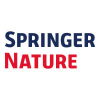Master Thesis: Uranium Removal Using - Karlsruhe, Deutschland - Springer Nature
Beschreibung
Master Thesis:
Uranium removal using photovoltaic-powered nanofiltration:
- Employer
- Helmholtz Association of German Research Centres
- Location
- Karlsruhe
- Closing date
- 20 May 2024
- Discipline
Job Type
Researcher
Employment - Hours
Part time
Duration
Fixed term
Qualification
PhD
Sector
Academia- You need to sign in or create an account to a job.
- Job Details
- Company
Job Details:
Area of research:
Diploma & Master Thesis
Part-Time Suitability:
The position is suitable for part-time employment.
Starting date:
Job description:
Uranium occurrence in natural water sources represents a threat to human health due to its chemitoxicity, leading public health agencies to set maximum acceptable concentration guidelines as low as 30 μg/L for drinking water.
This is the case of the old Krunkelbach pit near the municipality Menzenschwand in the Black Forest, where a spring water conduit has uranium concentration above the guideline.
Photovoltaic-powered nanofiltration (PV-NF) is a promising technology for the provision of drinking water in, for example, off-grid rural areas in developing countries.
Removal of uranium from contaminated groundwater using PV-NF could increase access to safe drinking water by enabling consumption of currently unutilized water sources, thereby contributing to the realization of United Nations Sustainable Development Goal (SDG) 6: ensure availability and sustainable management of water and sanitation for all.
This project aims to evaluate the removal of uranium from real water sources during field experiments using a mobile pilot-scale PV-NF system.
Specific project tasks will include:
- Conduct fieldbased experiments for the removal of uranium from water using a pilotscale photovoltaicpowered nanofiltration system.
Collect water samples for water analysis using IAMT facilities, including uranium analysis using inductively coupled plasma mass spectrometry (ICP-MS).Analyse experimental data and contribute to writing a joint research publication (in English).KIT is one of the biggest research institutions worldwide and has access to state-of-the-art research facilities.
This project is hosted by the relatively new Institute for Advanced Membrane Technology (IAMT) in new laboratories and state-of-the-art equipment.
IAMT is part of the Division Earth and Environment at KIT and the Faculty of Chemical and Process Engineering.The research team is international and the language is English (oral and written communication)
- This research center is part of the Helmholtz Association of German Research Centers. With more than 42,000 employees and an annual budget of over € 5 billion, the Helmholtz Association is Germany's largest scientific organisation._
Company:
The Helmholtz Association contributes to solving major challenges to assure the future of our society.
With more than 39,000 people on staff in 18 national research centres, the Helmholtz Association is Germany's largest scientific organization.
The name Helmholtz stands for concerted research in which networks form the key principle behind inquiring thought and action. Concerted research is efficient and flexible.The profile of the Helmholtz Association
The Helmholtz Association performs cutting-edge research which contributes substantially to solving the grand challenges of science, society and industry.
To succeed in meeting these responsibilities, Helmholtz concentrates its work in six research fields:
Energy, Earth and Environment, Health, Key Technologies, Matter, as well as Aeronautics, Space and Transport. Within each of these fields, research programs are developed by our scientists and regularly evaluated by renowned international experts. Their evaluation forms the basis for the programme-oriented funding that is allocated to Helmholtz research.
Within the six research fields, Helmholtz scientists cooperate with each other and with external partners - working across disciplinary, organizational and national borders.
Promoting young academics
Helmholtz scientists, a high-performance infrastructure and modern and efficient research management are the ingredients to the Helmholtz Association's success and global impact.
Its strategy begins with targeted recruitment of highly qualified staff at all levels, followed by comprehensive support aimed at further developing their potential.
Ensuring equal opportunities is an essential element in all talent management activities undertaken by the Helmholtz Association.**The Helmholtz Graduate Schoo
Mehr Jobs von Springer Nature
-
Mechatronics Technician
Berlin, Deutschland - vor 4 Tagen
-
Locum Associate or Senior Editor
Berlin, Deutschland - vor 3 Wochen
-
Professorship (W2) of Clinical Infrared Spectroscopy
Munich, Deutschland - vor 2 Wochen
-
Postdoc (F/m/d) / Scientific Assistant (F/m/d)
Dresden, Deutschland - vor 2 Wochen
-
Customer Service Spezialist
Heidelberg, Deutschland - vor 2 Wochen
-
Telekommunikationsfachkraft (M/w/d) Oder
Darmstadt, Deutschland - vor 2 Wochen

